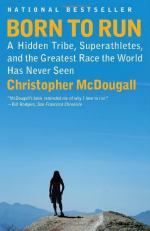
|
| Name: _________________________ | Period: ___________________ |
This test consists of 15 multiple choice questions and 5 short answer questions.
Multiple Choice Questions
1. What is a mountain range in western Mexico where the Copper Canyons are located?
(a) The Sierra Madre de Chiapas.
(b) The Sierra Madre Occidental.
(c) The Cordillera Neovolcánica.
(d) The Peninsular Ranges.
2. What is the location where the Tarahumara make their home?
(a) The Silver Canyons.
(b) The Marble Canyons.
(c) The Copper Canyons.
(d) The Jade Canyons.
3. Where is the Leadville Trail 100 held annually?
(a) Cody, Wyoming.
(b) Boulder, Colorado.
(c) Laramie, Wyoming.
(d) Leadville, Colorado.
4. What is the name of the doctor the author went to see about his foot in Chapter 2?
(a) Dr. Jenn Shelton.
(b) Dr. Joe Torg.
(c) Dr. Rick Fisher.
(d) Dr. Joe Vigil.
5. When was the Leadville Trail 100 first run?
(a) 1977.
(b) 1991.
(c) 1965.
(d) 1983.
6. The only person the author found who knew anything of Caballo Blanco was an editor of what magazine in Chapter 18?
(a) "UltraRunner."
(b) "Run For Fun."
(c) "Runners World."
(d) "Fitness Running."
7. How had the author felt after his article was published in Chapter 18?
(a) Guilty.
(b) Proud.
(c) Egotistical.
(d) Generous.
8. Ann Trason overtook the Tarahumara runners at what mark in the Leadville Trail 100 in Chapter 13?
(a) 12-mile mark.
(b) 28-mile mark.
(c) 23-mile mark.
(d) 40-mile mark.
9. Why were the Tarahumara runners unprepared for their first race at the Leadville Trail 100?
(a) They didn't have sunglasses.
(b) They didn't understand shoes.
(c) They didn't wear sunscreen.
(d) They weren't used to the elevation.
10. When does Caballo Blanco say that Rick Fisher decided get the Taramuhara tribe some PR in Chapter 8?
(a) The mid 1990s.
(b) The early 1990s.
(c) The mid 1980s.
(d) The late 1980s.
11. Who came in first in the race in Chapter 16?
(a) Arnulfo Quimare.
(b) Victoriano Churro.
(c) Salvador Holguin.
(d) Juan Herrera.
12. At what elevation does the Leadville Trail 100 begin?
(a) 8,300.
(b) 5,400.
(c) 2,100.
(d) 10,200.
13. Whose name did the author mention to Caballo Blanco to catch his attention in Chapter 7?
(a) Salvador's.
(b) Manuel's.
(c) Victoriano's.
(d) Martimano's.
14. Who was there when Juan and Martimano came through and was struck by the fact that they were laughing and enjoying the run in Chapter 14?
(a) Bob.
(b) Ken.
(c) Carl.
(d) Luis.
15. In Chapter 1, the author learned that Caballo Blanco always arrived at what time?
(a) 5:00 p.m.
(b) 4:00 p.m.
(c) 8:00 p.m.
(d) 9:30 p.m.
Short Answer Questions
1. How many runners were on the Tarahumara team that took on Ann Trason in 1994?
2. At what elevation did a group of hearty partying llama owners set up camp to help injured runners in Chapter 14?
3. When was the Barefoot Runners Society founded in the United States?
4. Who was known to be the greatest living Taramuhara runner in Chapter 3?
5. The Leadville Trail 100 is an ultramarathon held annually on trails and dirt roads through the heart of what mountains?
|
This section contains 426 words (approx. 2 pages at 300 words per page) |

|




